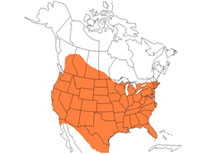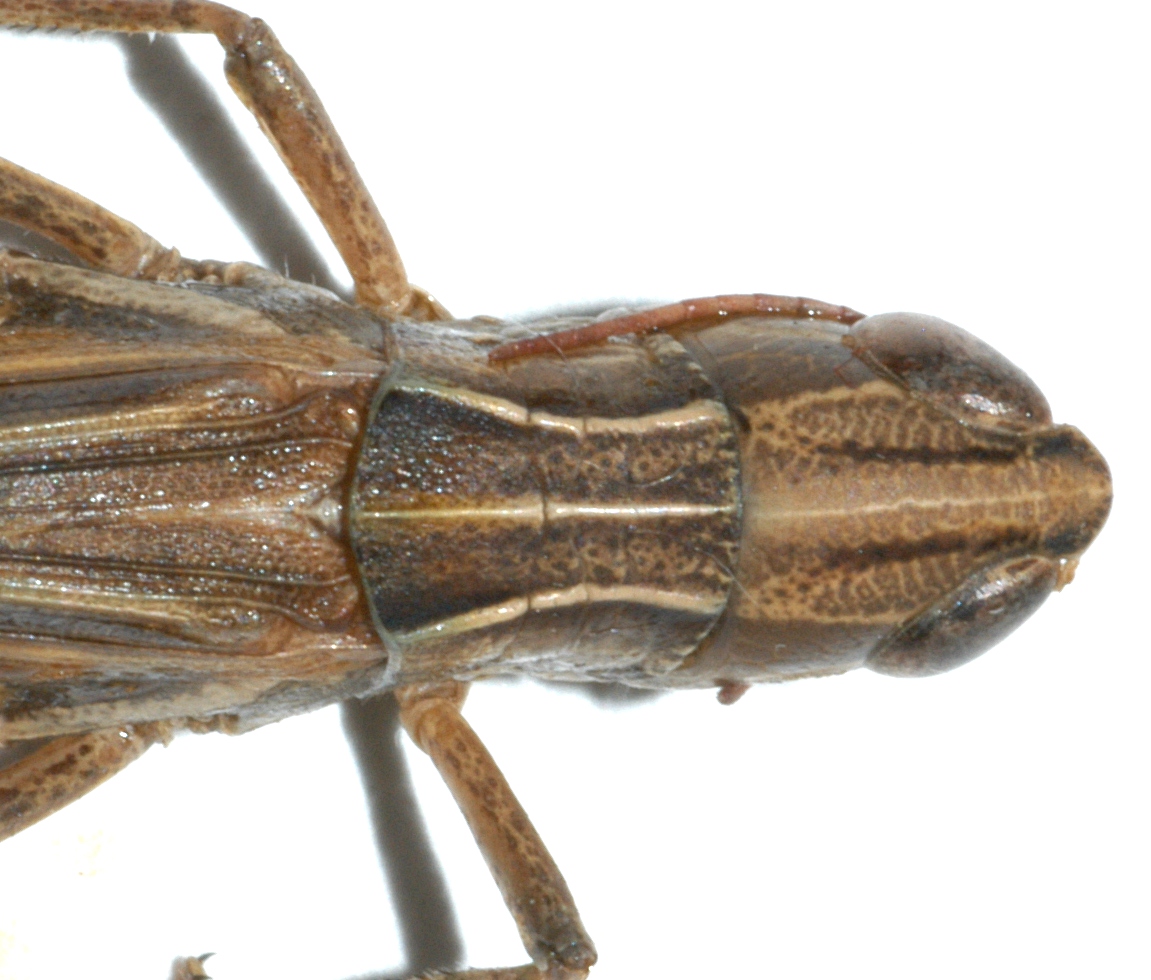Orphulella pelidna
|
Geographic range of Orphulella pelidna (Burmeister) |
|
Fig. 1, adult male |
|
Fig. 2, adult female |
|
Fig. 3, dorsal view of pronotum |
Species
Marsh slantfaced grasshopper
Orphulella pelidna (Burmeister)
Subfamily Gomphocerinae
Identification
Mostly brown (rarely green) grasshopper with black and white markings. Normally a dark stripe extends from the eye to the forewing.
The lateral carinae of the pronotum are cut by with two or three sulci with posterior triangular marks (black).
Hind tibia are brown, but a bluish tint is sometimes seen.
Wings extend past the hind femur, and normally beyond the abdomen. Hind wings are clear.
Can be confused with Orphulella speciosa and Syrbula admirabilis. Orphulella pelidna occurs in habitats that are typically more wet than O. speciosa. It can be distinguished from S. admirabilis by its small size and unspotted forewings.
Distribution and habitat
Present throughout the United States, southern Canada, and northern Mexico. Typically occurs in moist areas of short and mixed-grass prairies.
Economic importance
Not economically important.
Food preferences
Feeds on grasses and sedges.
Dispersal and migration
Flies rapidly, but only for short distances.
Often flies into vegetation, where it will then walk to seek shelter.
Hatching
Little is known about the hatching of O. pelidna.
However, O. speciosa is known to be a late developing species with hatch lasting four to six weeks starting in May and June.
Nymphal development
Nymphs are present in the spring and go through five instars.
Adults and reproduction
Adults present July through October.
Little is known about the reproduction of O. pelidna.
Population ecology
Orphulella pelidna is found in numerous habitats, but is known to avoid highly shaded areas.
However, It is rarely found in high densities in any habitat.
Little is known on the ecology of O. pelidna.
Daily activity
Not known for O. pelidna, but documented for O. speciosa.
Source and date
University of Nebraska by Sean Whipple & Mathew L. Brust June 2011
Selected references
Brust, M. L., W. W. Hoback, and R. J. Wright.
2008.
The Grasshoppers (Orthoptera: Acrididae and Romaleidae) of Nebraska.
University of Nebraska-Lincoln Extension. 138pp.
Campbell, J. B., W. H. Arnett, J. D. Lambley, O. K.
Jantz and H. Knutson.
1974. Grasshoppers (Acrididae) of the Flint Hills native tallgrass prairie in Kansas.
Kansas Agricultural Experimental Station Research Paper 19.
Capinera, J. L., R. D. Scott, and T. J. Walker.
2005.
Field Guide to Grasshoppers, Katydids, and Crickets of the United States.
Comstock Publishing Associates. 280pp.
Otte, D. 1981. The North American Grasshoppers. Volume 1. Acrididae: Gomphocerinae and Acridinae. Harvard University Press, Cambridge. 275 pp.



